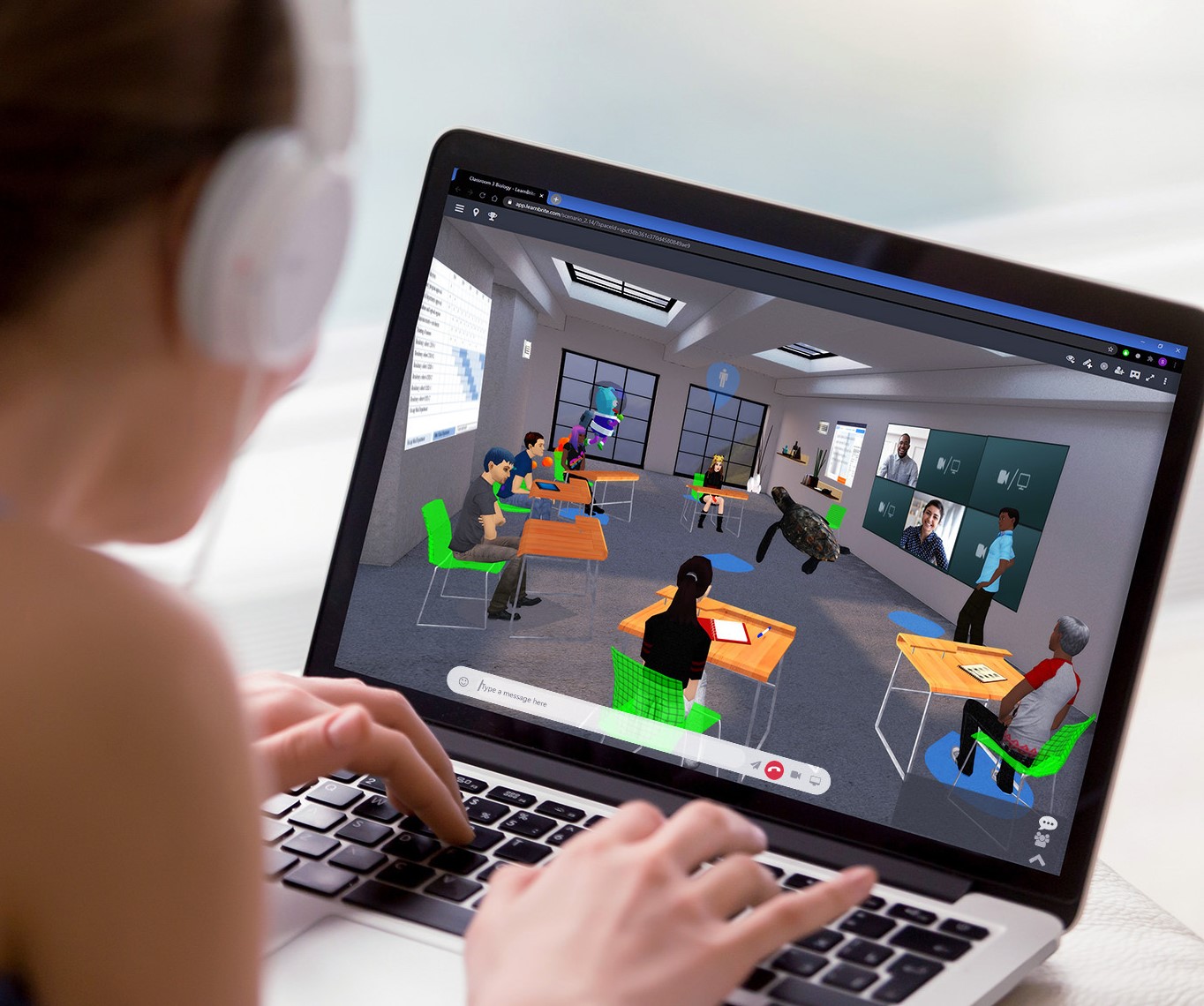Enhancing Learning with Popular Instructional Design Models
Creating successful learning experiences is a challenging job for instructional designers. You need a systematic instructional design process to facilitate learning and achieve the desired outcomes. In this blog post, ‘What is the most effective instructional design model,’ we’ll explore some of the most popular instructional design models used by professionals like yourself.
We’ll discuss the ADDIE model – Merrill’s Principles and Kemp Design Model – two of the most widely used frameworks for designing training programs. We’ll also delve into Gagne’s Nine Events of Instruction, which focuses on stimulating recall and eliciting performance from learners.
In ‘What is the most effective instructional design model,’ you will learn how these models can help create engaging learning activities that enhance retention and engage learners effectively. We’ll discuss setting clear instructional objectives using concept maps, case studies, or other visual approaches based on prior knowledge or eLearning projects.
Finally, we’ll cover how to assess performance using feedback mechanisms such as quizzes or surveys so that your training programs are constantly improving over time. By the end of this article, you will be equipped with all the tools to apply these popular instructional design models in your work successfully. So let’s get started!

Table Of Contents:
- Enhancing Learning with Popular Instructional Design Models
- Agile Methodology in Instructional Design
- The ADDIE Model for Instructional Design
- Action Mapping – A Four Step Process for Effective Learning Experiences
- Evaluating Learner Progress Using Evaluation Instruments
- The ARCS Model for Effective Learning
- Best Practices for Instructional Design Models for Online Learning
- FAQs in Relation to What is the Most Effective Instructional Design Model
- Conclusion
Types of Instructional Design Models
What is the most effective instructional design model? Various current instructional design approaches exist, each providing a distinct strategy for forming impactful learning experiences. In this section, we will explore four popular models and their methodologies.
Gagne’s Nine Events Instructions is a systematic instructional design process that breaks down the learning experience into nine distinct stages, from gaining attention to enhancing retention and transfer to the job setting through application activities or generalization exercises.
This model focuses on designing instruction that engages learners in meaningful activities, which can stimulate recall and provide feedback for improvement. To ensure a practical learning experience, this approach encourages active participation by leveraging idioms and colloquialisms and incorporating keywords throughout the course materials. This approach facilitates learning for learners of all aptitudes while upholding the highest grammar, spelling, and punctuation standards.
Bloom’s Taxonomy is an educational framework designed by Benjamin Bloom that organizes cognitive skills from lower-order thinking (knowledge) to higher-order thinking (evaluation). It comprises six categories: knowledge, comprehension, application, analysis synthesis, and evaluation. This model helps instructors create measurable objectives while providing a visual approach for assessing performance throughout instruction.
Anderson And Krathwohl’s Model is another instructional design model focused on how people learn rather than what they learn. It consists of three phases; input, where new information is presented to learners; processing, where learners apply knowledge gained in previous steps; and output, where learners demonstrate understanding through assessment or practical applications such as concept maps or case studies.
The Kemp Design Model focuses on instructional design’s development and implementation phases, emphasizing the need to establish clear objectives before selecting an appropriate media. Additionally, it emphasizes sequencing content logically to build upon each step while eliciting performance at every stage of the learning experience.
This approach ensures that learners understand not only what they have to do but why they must do it before tackling more complex tasks within training programs or eLearning projects.
The various instructional design models discussed above comprehensively understand the different approaches to designing compelling learning experiences. With Agile Methodology, Instructional Designers can now quickly and efficiently create interactive, engaging e-learning courses that can be adapted for multiple platforms.Key Takeaway: This article provides an overview of four popular instructional design models – Gagne’s Nine Events Instructions, Bloom’s Taxonomy, Anderson and Krathwohl’s Model, and Kemp Design Model – to help experienced professionals create effective learning experiences. Each model focuses on engaging learners in meaningful activities while providing a systematic approach for designing instruction that encourages active participation through the use of idioms and colloquialisms.
Agile Methodology in Instructional Design
What is the most effective instructional design model? Agile methodology has become increasingly popular in instructional design projects due to its iterative approach. This method allows learning materials to evolve over time based on user feedback and makes it easier for instructional designers to create effective learning experiences.
One of the key benefits of using agile methodology is that it provides flexibility throughout the development process, allowing changes and modifications as needed. Agile also enables instructional designers to quickly identify problems or areas for improvement within a project before they become major issues. Agile also facilitates a collaborative approach to project development, allowing all parties to be part of the decision-making process for better results.
By fostering collaboration among team members, agile approaches enable them to work together more effectively and efficiently in order to develop successful learning experiences for learners. By splitting up bigger tasks into more compact ones, teams can focus on individual pieces rather than attempting to manage everything simultaneously.
As a result, each team member can contribute their expertise in specific areas while still working towards the same goal: creating successful learning experiences for learners.
However, there are some drawbacks associated with using an agile methodology in instructional design projects as well. For example, this type of approach may not be suitable for complex projects where clear timelines and goals need to be established upfront or when multiple stakeholders need approval before moving forward with any changes or updates.
Additionally, there may be times when instructionally sound decisions cannot be made without taking into account long-term implications; something which isn’t always possible with an agile approach since much of the decision-making occurs during implementation rather than planning stages
Agile methodology in instructional design is a great way to create efficient, effective and engaging learning experiences. The ADDIE model for instructional design can provide further structure and guidance when creating these types of courses.
Key Takeaway: Agile methodology is becoming a popular choice for instructional design projects, offering flexibility and collaboration throughout the process. Yet, this strategy may not be the most fitting for projects of a complicated nature or when enduring effects must be considered. Ultimately, before utilizing agile as a solution, it is essential to contemplate its advantages and disadvantages. “Harness the power of #mobilelearning with an #LMS to provide cost-effective, anytime, anywhere learning experiences for students & employees.”Click To Tweet
The ADDIE Model for Instructional Design
What is the most effective instructional design model? The ADDIE model is a popular framework for creating effective training materials. It comprises five linear phases: Analysis, Design, Development, Implementation, and Evaluation.
In the analysis phase, instructional designers identify the learning objectives and analyze learners’ needs to determine what content should be included in the course or program.
During the design phase, they develop an instructional strategy based on Merrill’s principles of instruction that will facilitate learning by stimulating recall and helping learners apply their prior knowledge to new situations.
This includes designing activities that enhance retention while engaging learners with visual approaches such as concept maps and case studies. Finally, the development phase involves creating all necessary resources, including text-based content, videos, animations, simulations, and assessments used to measure learner progress.
The ADDIE Model for Instructional Design is a practical framework that can be used to create comprehensive learning experiences. Building on this foundation, Action Mapping provides a four-step process further to refine the design of instructional materials and activities.Key Takeaway: Instructional designers utilize the ADDIE model to create effective training materials that meet learners’ needs. This involves analyzing learning objectives, developing an instructional strategy based on Merrill’s principles of instruction, and producing relevant resources including animations, simulations and assessments. All this is done with a view to giving participants engaging experiences through stimulating recall and helping them apply prior knowledge in new situations.

Action Mapping – A Four Step Process for Effective Learning Experiences
What is the most effective instructional design model? Action Mapping is a four-step process developed by Cathy Moore to create effective learning experiences. It involves essential building blocks that help connect relevant information to real-world scenarios while reinforcing key concepts through review sessions or problem-solving exercises.
The first step of the Action Mapping process is Identifying Business Goals. This helps define the desired outcomes and objectives of the instructional design project, which will be used to guide all subsequent steps in the development process. An objective of the instructional design project could be to enhance customer service agents’ understanding of product advantages and characteristics, with the aim of improving their client support.
The second step is Defining Measurable Objectives. This includes breaking down goals into measurable tasks that learners must complete in order to achieve success with their training program.
These objectives should align with Bloom’s Taxonomy as well as Gagne’s Nine Events Instructional Model in order to ensure that learners are able to recall what they have learned and apply it effectively within various learning situations or contexts.
In the third step of Action Mapping, instructional designers craft scenarios and challenge assumptions by employing visual approaches such as concept maps or case studies based on realistic workplace situations that are directly related to the business goals.
This helps stimulate recall and promote cognitive learning activities among learners during instruction sessions or self-paced modules. In addition, it motivates individuals to be inventive while honing their aptitudes in problem-solving.
Action Mapping is an effective instructional design model that helps to create meaningful learning experiences and achieve desired objectives. By using evaluation instruments, such as self-assessment tools, observation methods and qualitative or quantitative methods, we can measure learner progress accurately.
Key Takeaway: Action Mapping is an effective instructional design model that encourages learners to reach desired objectives by breaking down goals into measurable tasks, crafting scenarios and challenge assumptions using visual approaches such as concept maps or case studies. It also motivates individuals to be inventive while honing their problem-solving skills.

Evaluating Learner Progress Using Evaluation Instruments
Evaluating learner progress is a crucial step in the instructional design process. It helps identify areas where improvements need to be made and ensures that learning objectives are met. Instructional designers can use several evaluation instruments, such as self-assessment tools, observation, and qualitative and quantitative methods.
By utilizing self-assessment tools, learners can understand their performance and identify improvement areas. These tools typically include questionnaires or surveys asking learners about their knowledge or ability related to a particular topic or skill set.
This type of assessment provides insight into how well the learner has grasped the material and allows for targeted instruction if needed.
Observation is another way for instructional designers to evaluate learner progress. Through careful observation, instructors can get an idea of how well students engage with content and any potential misunderstandings regarding key concepts or skill sets being taught during a course session or module.
This type of evaluation also allows instructors to provide immediate feedback when necessary to ensure effective learning outcomes.
By evaluating learners’ progress using evaluation instruments, instructional designers can gain valuable insights into the effectiveness of their learning materials. The ARCS Model for Effective Learning is a comprehensive approach to designing effective instruction that considers these evaluations.Key Takeaway: Instructional designers can effectively evaluate learner progress by using self-assessment tools, observing students during course sessions or modules and providing immediate feedback when needed. With these measures in place, instructional designers are better equipped to get a handle on how well their learners are grasping the material and ensure successful learning outcomes.

The ARCS Model for Effective Learning
What is the most effective instructional design model? The ARCS model is a popular instructional design process to facilitate learning and enhance retention. It stands for Attention, Relevance, Confidence, and Satisfaction.
The model focuses on stimulating recall of prior learning and motivating learners through these four components.
Attention refers to capturing the learner’s interest in the subject matter being taught. This can be done using visuals such as concept maps or case studies relevant to their interests or experiences. To maintain attention, it is essential to provide exciting activities throughout the instruction that keep learners engaged and interested in what they are doing.
Relevance refers to how applicable the presented content is to each learner’s needs and goals. It helps motivate them by showing how this material can achieve their objectives and why it matters to them precisely. By ensuring each lesson ties into something meaningful for your audience, you can significantly increase engagement levels.
Confidence relates to how comfortable learners feel when attempting tasks related to new knowledge or skills acquired during training programs or courses delivered online or offline. Feedback after every task will help build confidence while providing an opportunity for improvement. People learn best when they understand what to do before taking action, so ensure instructions are always transparent.
Finally, satisfaction comes from achieving desired outcomes set out in instruction objectives. When learners complete a task successfully, they elicit performance data through evaluation instruments like self-assessment tools or observation reports, which give them a sense of accomplishment and satisfaction with their progress.
By following the principles of instructional design outlined in the ARCS model, you can create compelling learning experiences that engage learners throughout any e-learning project, regardless of its complexity.
Use multimedia resources such as videos, audio files, and animations where appropriate; this visual approach makes complex topics easier to understand while helping learners apply knowledge gained during instruction situations more effectively in real-life scenarios.
The ARCS Model for Effective Learning provides a comprehensive approach to instructional design, allowing learning professionals to create engaging and effective online experiences.
By following best practices in instructional design models for online learning, such as identifying learner needs and creating interactive content, learners can be better equipped with the skills they need to succeed.Key Takeaway: Using the ARCS model (Attention, Relevance, Confidence and Satisfaction), instructional design principles can be applied to create immersive learning experiences that will engage learners throughout any e-learning project. This process encourages recall of prior knowledge while providing meaningful activities which build confidence and satisfaction in achieving desired outcomes.
Best Practices for Instructional Design Models for Online Learning
What is the most effective instructional design model? Instructional design models are essential for creating compelling online learning experiences. Identifying the learner’s needs before starting any instructional design process is essential.
Gleaning insight into learner aims, inclinations, and pre-existing understanding of the subject can be accomplished through surveys and conversing with students. Once these needs have been identified, an appropriate instructional strategy can be selected to facilitate learning online.
Creating interactive content is crucial to any successful instructional design model for online learning. Interactive elements such as quizzes, games, simulations, and videos help engage learners and enhance retention of course material.
In addition, using multimedia resources like audio clips or images helps break up large chunks of text-based content into smaller pieces, making it easier for learners to digest information quickly without getting overwhelmed or bored.
Designing assessments that work well in an online environment requires careful consideration when selecting assessment types that align with the objectives set out at the beginning of the project. For example, self-assessment tools are excellent for evaluating progress throughout a course.
At the same time, observation methods such as peer reviews or instructor feedback provide more qualitative data on how well a student has grasped concepts taught during instruction sessions. In addition, quantitative measures such as tests or surveys provide valuable insight into learner performance.
Still, they should be used in various ways since they may overlook certain aspects related to comprehension levels.
The ADDIE model is one of the most popular instructional design models for eLearning courses due to its systematic approach that covers all stages, from analysis to evaluation, within each project cycle. Additionally, based on cognitive theory, Merrill’s principles emphasize how people learn rather than what they need to know by focusing more heavily on activities and situations created during instruction sessions that stimulate recall and encourage application.
Moreover, the Kemp Design Model takes a visual approach with concept maps, case studies, stories, etc., instead of traditional lecture-style teaching techniques, which gives students more chances to apply knowledge gained from previous lessons in new scenarios.
All in all, these models are essential for crafting compelling online learning experiences. Keywords: Instructional Design Models; ADDIE Model; Kemp Design Model; Online Learning ExperiencesKey Takeaway: Using the ADDIE, Kemp Design and Merrill’s principles models of instructional design, online learning experiences can be crafted that are engaging and effective. These models focus on activities to stimulate recall, visuals for concept mapping, case studies and stories rather than traditional lecture-style teaching techniques.
FAQs in Relation to What is the Most Effective Instructional Design Model
Which is the best model for instructional design that can be applied in our modality and locality?
What is the most effective instructional design model? The best instructional design model for our modality and locality is the ADDIE (Analysis, Design, Development, Implementation, and Evaluation) Model.
This iterative process allows us to assess the needs of learners through analysis, create learning objectives from those needs in the design phase, develop content that meets those objectives in the development stage, and implement it into a course or program with evaluation as an ongoing measure of success.
In addition, the ADDIE model provides flexibility for modifications based on feedback throughout each step, making it ideal for creating immersive 3D experiential learning scenarios.
Why is the ADDIE model effective?
What is the most effective instructional design model? The ADDIE model is an effective instructional design process because it provides a systematic approach to creating educational content. It helps instructional designers and learning professionals break down the development of any course into five distinct phases:
Analysis, Design, Development, Implementation, and Evaluation. This allows for efficient use of resources as each phase builds on the previous one to create quality instruction that meets learner needs. Additionally, evaluating at each stage during development and implementation can help ensure success with learners when implemented in real-world settings.
What are 4 instructional design models?
1. ADDIE Model:
The ADDIE model is an instructional design process that stands for Analysis, Design, Development, Implementation, and Evaluation. It is a systematic approach to designing effective instruction by breaking down the components of learning into manageable steps.
2. SAM Model:
The SAM (Successive Approximation Model) model is an iterative instructional design method that focuses on continuous improvement through multiple cycles of analysis, design, and evaluation until the desired outcome has been achieved.
3. ARCS Model:
The ARCS (Attention-Relevance-Confidence-Satisfaction) model is a four-step process used in the instructional design which includes gaining Attention from learners; establishing Relevance between content and learner’s needs; building Confidence in their ability to complete tasks; and ensuring Satisfaction with the results they achieve at each stage of learning experience.
4. Gagne’s Nine Events Of Instruction:
Robert Gagne developed this model to structure instruction based on cognitive psychology principles such as stimulus control theory and information processing theory.
The nine events include gaining attention, informing objectives, stimulating recall of prior knowledge, presenting new material, providing guidance practice & feedback, assessing performance & reinforcement, enhancing retention & transfer, and finally, reviewing.
What is effective instructional design?
An effective instructional design creates learning experiences that enable learners to acquire knowledge, skills, and attitudes. It involves analyzing the target audience’s needs and objectives; designing activities, materials, assessments, and technology-based solutions; developing content in various formats; implementing the instruction; evaluating its effectiveness; and refining it based on feedback.
In addition, instructional designers must ensure that their designs are aligned with best practices for adult learning theory while also considering individual learner preferences.
Conclusion
What is the most effective instructional design model? When it comes to instructional design models, there is no one-size-fits-all solution. Likewise, only some instructional design models are appropriate for all scenarios; the most suitable will depend on the objectives sought and the type of knowledge to be imparted.
While ADDIE and SAM remain popular among instructional designers today, the agile methodology offers a more flexible approach that can be adapted for different projects. Ultimately, each organization must decide which model suits their objectives and learners most to ensure a successful learning experience.
Take your learning and training to the next level with LearnBrite‘s innovative instructional design model. Experience immersive 3D experiential learning scenarios, micro-learning modules, employee onboarding, soft skills training and more that are designed for maximum effectiveness.
Learn faster in a safe environment with increased recall for Instructor-led training, traditional classrooms, self-paced scenarios, and employee onboarding with LearnBrite.
With LearnBrite‘s no-code platform to create immersive 3D learning experiences for your training and onboarding needs. Leverage our advanced authoring tools to make the most of every learning opportunity!“Futureproof” your Metaverse with this browser-based platform that enables access on all smartphones, tablets, laptops, and VR/AR headsets, without requiring downloads or software installation. Try and explore LearnBrite today and book a demo call!


Recent Comments